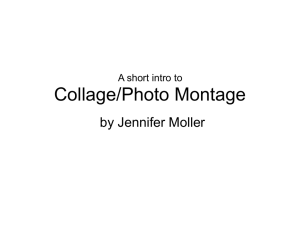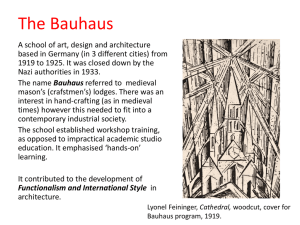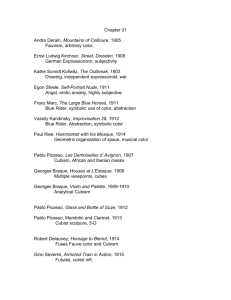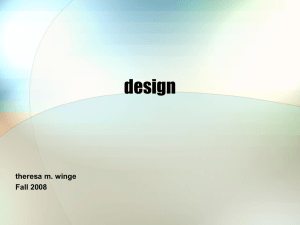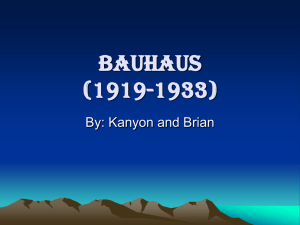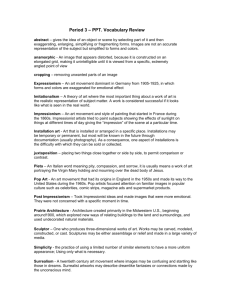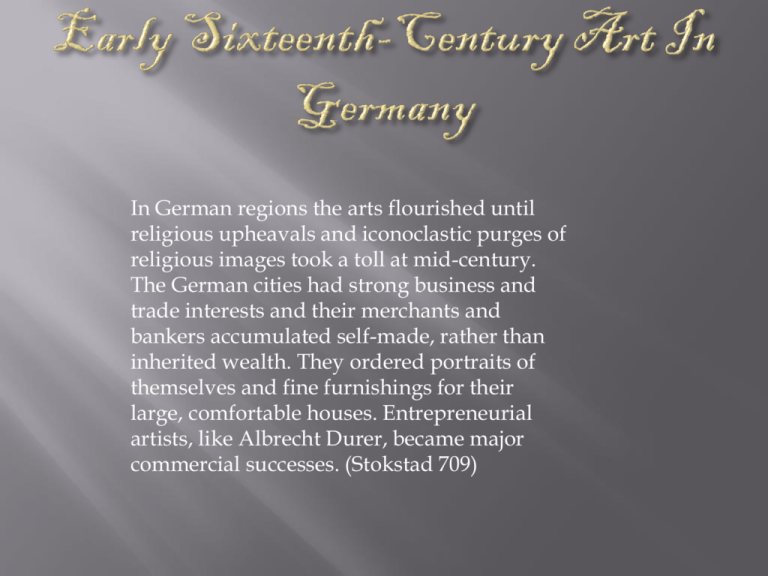
In German regions the arts flourished until
religious upheavals and iconoclastic purges of
religious images took a toll at mid-century.
The German cities had strong business and
trade interests and their merchants and
bankers accumulated self-made, rather than
inherited wealth. They ordered portraits of
themselves and fine furnishings for their
large, comfortable houses. Entrepreneurial
artists, like Albrecht Durer, became major
commercial successes. (Stokstad 709)
“Albrecht Dürer is the greatest exponent of Northern European
Renaissance art. While an important painter, in his own day
Dürer was renowned foremost for his graphic works. Artists
across Europe admired and copied Dürer's innovative and
powerful prints, ranging from religious and mythological scenes,
to maps and exotic animals.
Technically, Dürer's prints are exemplary for their detail and
precision. The son of a goldsmith, Dürer was trained as a
metalworker at a young age. He applied the same meticulous,
exacting methods required in this delicate work to his woodcuts
and engravings, notably the Four Horsemen of his Apocalypse
series (1498), and his Knight, Death and Devil (1513).
Dürer's training also involved travel and study abroad. He went
to Italy in 1494, and returned again in 1505-6. Contact with Italian
painters resonated deeply in his art. Influenced by Venetian
artists, who were renowned for the richness of their palette,
Dürer placed greater importance on colour in his paintings. His
Feast of the Rose Garlands (1506), removed any doubt that, as well
as a master of prints, he was an accomplished painter.
Dürer was also a great admirer of Leonardo da Vinci. He was
intrigued by the Italian master's studies of the human figure, and
after 1506 applied and adapted Leonardo's proportions to his
own figures, as is evident in his drawings. Later in his life, in the
1520's, he illustrated and wrote theoretical treatises instructing
artists in perspective and proportion.
Dürer was a humanist and a creator. His awareness of his own
role as an artist is apparent in his frontal, Christ-like Self Portrait,
1500, just one of many self portraits that he painted in his career.
More than simply producing works for his own time, Dürer saw
his fame and his contribution as enduring, and as part of
history.”
- T.L. Ponich (http://www.artcyclopedia.com/artists/durer_albrecht.html)
“Striking a rare balance between formal elegance
and expressive strength, the sculpture of Tilman
Riemenschneider (c. 1460–1531) stands solidly
anchored in the late Gothic tradition while also
reflecting emerging humanist concerns. This
international loan exhibition brings together many
of the sculptor's finest works from throughout his
career, including elements from altarpieces, cult
figures, objects of private devotion, models, and
sculpture with a secular function. Riemenschneider,
active in Würzburg from about 1483 until 1531, was
one of the first sculptors to abandon *polychromy
on occasion, making a conscious aesthetic decision
to leave visible his favored material, limewood.
Here on display are examples of both his
monochrome and his polychrome wood sculptures,
as well as exquisite works in alabaster and
sandstone. The inclusion of a few outstanding
works by Riemenschneider's most important
predecessors and contemporaries—such as Niclaus
Gerhaert von Leiden, Michel Erhart, and Veit
Stoss—allows his achievement to be viewed in its
proper
context.”(http://www.nga.gov/exhibitions/tilmanint
ro.shtm) *pol·y·chro·my (pl-krm) n. The use of
many colors in decoration, especially in
architecture and sculpture.
The American Heritage® Dictionary of the English
Language, Fourth Edition copyright ©2000 by
Houghton Mifflin Company. Updated in 2003.
Published by Houghton Mifflin Company. All rights
reserved.
Isenheim
Altarpiece
Prayer was the principal source of
solace and relief to the ill before the
advent of modern medicine. About
1505, the Strasbourg sculptor
Nikolaus Hagenauer (active 14931530s) carved an alter piece for the
Abbey Saint Anthony in Isenheim
Near Colmar . Matthias Grunewald
is best known today for painting
the wings of the ISENHEIM
ALTARPIECE, built to protect the
shrine carved by Nikolaus
Hagenauer. (Stokstad 711)
Expressionists
Members of Der Blaue Reiter (“The
Blue Rider”) harbored more
spiritual intentions that led one
member to member to produce
some of the first completely
abstract paintings. The group was
named for a popular image of blue
knight, the Saint George on the city
emblem of Moscow, which many
believed would be the worlds
capital during Christ’s 1,000 yearyear reign on earth following the
Apocalypse prophesied by Saint
John. The Blue Rider formed in
Munich around the painters Vasily
Kadinsky (1866 – 1944), a Russian
from Moscow, and Franz Marc
(1880 – 1916), a native of Munich,
who both considered blue the color
of spirituality. (Stokstad 1073)
Autria’s Egon
Schiele
In Self-Portrait Nude, the artist
stares at the viewer with an
anguished expression, his
emaciated body stretched into an
uncomfortable pose. The absent
right hand suggests amputation,
and the unarticulated genital
region, castration. The missing
body parts have been interpreted as
the artist’s symbolic selfpunishment for indulgence in
masturbation, then commonly
believed to lead to insanity.
Schiele’s father had suffered from
untreated syphilis and died insane
when Egon was fourteen, leaving
his son with an abiding link
between sex, suffering, and death.
(Stokstad 1073)
Expressionist
“Prominent in German Expressionist art was Die
Brucke (“The Bridge”), which formed in Dresden
in 1905 when four architecture students – Fritz
Bleyl (1880 – 1938), Erich Heckel (1883 – 1970),
Ernst Ludwig Kirchner (1880 – 1938), and Karl
Schmidt-Rottluff (1884 – 1976) – decided to devote
themselves to painting and to form an exhibiting
group.”(Stokstad1070)
“Bauhaus, famous German school of design that had
inestimable influence on modern architecture, the industrial
and graphic arts, and theater design. It was founded in 1919
by the architect Walter Gropius in Weimar as a merger of an
art academy and an arts and crafts school. The Bauhaus
was based on the principles of the 19th-century English
designer William Morris and the Arts and Crafts movement
that art should meet the needs of society and that no
distinction should be made between fine arts and practical
crafts. It also depended on the more forward-looking
principles that modern art and architecture must be
responsive to the needs and influences of the modern
industrial world and that good designs must pass the test
of both aesthetic standards and sound engineering. Thus,
classes were offered in crafts, typography, and commercial
and industrial design, as well as in sculpture, painting, and
architecture. The Bauhaus style, later also known as the
International Style, was marked by the absence of
ornament and ostentatious facades and by harmony
between function and the artistic and technical means
employed.
In 1925 the Bauhaus was moved into a group of starkly
rectangular glass and concrete buildings in Dessau
especially designed for it by Gropius. In Dessau the
Bauhaus style became more strictly functional with greater
emphasis on showing the beauty and suitability of basic,
unadorned materials. Other outstanding architects and
artists on the staff of the Bauhaus included the Swiss
painter Paul Klee, the Russian painter Wassily Kandinsky,
the Hungarian painter and designer László Moholy-Nagy
(who founded the Chicago Institute of Design on the
principles of the Bauhaus), the American painter Lyonel
Feininger, and the German painter Oskar Schlemmer.
In 1930 the Bauhaus came under the direction of the
architect Ludwig Mies van der Rohe, who moved it to Berlin
in 1932. By 1933, when the school was closed by the Nazis,
its principles and work were known worldwide. Many of its
faculty immigrated to the United States, where the Bauhaus
teachings came to dominate art and architecture for
decades.“
(http://encarta.msn.com/encyclopedia_761553605/Bauhaus.
html)
Bauhaus
Dada
“Disgust with the conflict (World
War I) would eventually spring up
on many fronts, but the first artistic
movement to react against the
slaughter and its moral quandaries
was Dada. If the goal of Modern art
was questioning and overthrowing
the traditions of art, the Dadaists
went further and questioned art
itself.”(Stokstad 1088)
“Born 1886 in Pirmasens, Hugo Ball studied German literature, philosophy,
and history at the universities of Munich and Heidelberg (1906-1907). In 1910,
he moved to Berlin in order to become an actor and collaborated with Max
Reinhardt and worked as a director and stage manager for various theater
companies in Berlin, Plauen, and Munich. He also started writing,
contributing to the expressionist journals Die Neue Kunst and Die Aktion, both
of which, in style and in content, anticipated the format of later Dada
journals. Soon after the outbreak of World War I he and Emmy Hennings, a
cabaret singer whom he had met in Munich and whom he would marry in
1920, emigrated to Zurich, Switzerland. In February 1916 he founded the
'Cabaret Voltaire' in the Spiegelgasse. There he met with Hans Arp, Marcel
Janco, Tristan Tzara, and later Richard Huelsenbeck and Walter Serner.
In July 1916 Ball left the Dada circle in Zurich in order to recuperate in the
Swiss countryside. He returned in January 1917 to help organize Galerie
Dada, an exhibition space that opened in March 1917. Events at the Galerie
included lectures, performances, dances, weekend soirées, and tours of the
exhibitions. Although Ball supported the educative goals of the Galerie, he
was at odds with Tzara over Tzara's ambition to make Dada into an
international movement with a systematic doctrine. He left Zurich in May
1917 and did not again actively participate in Dada activities.
Hugo Ball died in Sant' Abbondio, Switzerland, 14 September 1927.
(http://www.dada-companion.com/ball/)
The Great
Suppression
In summer 1937, Joseph Goebbels’ degenerate art commission
canvassed Germany, searching public and private collections.
Propaganda office officials seized the works of Otto Dix, Oskar
Kokoschka, Erich Nolde, Ernst Ludwig Kirchner, Max Pechstein, and
Käthe Kollwitz, among others. Especially hard hit was the modern art
division of the Berlin National Gallery, which lost 136 paintings, 28
sculptures, and 324 drawings.Goebbels first visited the warehouse
on November 4, 1937. The painter Adolf Ziegler, President of the
Reich Chamber of Artists, and architect Albert Speer accompanied
him. In his diary, Goebbels wrote, “Very few borderline cases. The
rest is such dreck that a three hour visit makes one sick.”In order to
convince Hitler to legalize the confiscations that had already taken
place, Goebbels gave him a tour of the warehouse on January 13,
1938. “No picture was acceptable,” wrote Goebbels in his diary.
“Führer also wants no compensation paid to the owners. We will
exchange a few of the works outside of Germany for real
masterpieces.” On May 31, 1938, the seizure without compensation
of degenerate art was legalized ex post facto. At the same time,
avant-garde artists living in Germany were forbidden to paint. Franz
Hofmann, the director of fine art and art critic of the Völkischer
Beobachter, recommended that “the worthless, unsalable remainder
be dumped in a trash heap and symbolically burned,” Goebbels
wrote. “I should also deliver a peppery eulogy.” But Goebbels
reserved many works for an “instructional” and propaganda exhibit,
“Degenerate Art,” which traveled to large German and Austrian cities.
From February 26th to May 8th, 1938, the works were on display in
Berlin, at the “Haus der Kunst,” Königsplatz 4.The exhibit catalogue
is a rarity today. It disparaged the anti-war pictures of Otto Dix as
“defense-sabotage.” A painting by a schizophrenic in a mental
hospital “looks more human than any concoction of Paul Klee.” A
painting by Kurt Schwitters was “the height of stupidity or
impudence--or both.” But one German commented, “the Nazis, in
spite of themselves, gave us the chance to become acquainted with
the crème of modern art, all in one
place.”(http://stevenlehrer.com/degenerate_art.htm)
One of the first Postmodern movements to rise
in the late 1970s was Neo-Expressionism, a
return to the Expressionist styles in which the
artist tries to render his or her inner self more
than the outward appearance of the subject
matter at hand. In Germany, the revival of
Expressionism, took on political connotations
because the work of the original Expressionist
had been labeled degenerate and banned by the
Nazis during the 1930s. The German NeoExpressionist Anselm Kiefer was born in final
weeks of World war II, and his work he has
sought to come to grips with country’s Nazi past
– “to understand the madness.”(Stokstad 1175)
Stokstad, Marilyn. Art History –Volume Two. 3rd Edition. New Jersey: Pearson Prentice Hall, 2008.
http://www.artcyclopedia.com/artists/durer_albrecht.html
http://www.nga.gov/exhibitions/tilmanintro.shtm
artistquoteoftheday.wordpress.com/.../
http://www.welt.de/kultur/article1295333/Anselm_Kiefer_malt_sich_fuer_den_Louvre.html
http://www.onlinekunst.de/
http://www.erroneo.org/monografie/eschiele.htm
http://www.metmuseum.org/TOAH/ho/11/euwcm/ho_1984.433.298a.htm
http://6pack.wordpress.com/2007/03/27/una-concepcion-diferente-bauhaus/
http://web.fu-berlin.de/chronik/b-picts/1961-1969/gropius.html
http://www.answers.com/topic/kirchner-face-jpg
http://www.dhm.de/lemo/html/biografien/SchmidtRottluffKarl/
http://www.erich-heckel.de/
http://www.germanexpressionism.com/printgallery/heckel/index.html
http://www.oberlin.edu/amam/Kirchner_SelfPortrait.htm
http://www.artmag.com/museums/a_payba/anlrmww/expressi.html
http://www.artstamps.dk/Art_Styles_2.htm
www.geocities.com/.../cent20/heckel1.html
http://www.zeno.org/Literatur/M/Ball,+Hugo
http://www.artsconnected.org/toolkit/encyc_coloreffects.html
http://images.google.com/imgres?imgurl=http://static.guim.co.uk/Guardian/arts/gallery/2007/dec/11/art.artnews/5352.jpg&imgrefurl=http://www.guardian.co.uk/arts/gallery/2007/dec/11/art.artnews%3Fpicture%3D331523835&usg=__kUY7kwcoZFeAh0D99ynPQdocrY=&h=360&w=500&sz=42&hl=en&start=6&um=1&tbnid=bTezkwLtI4rwM:&tbnh=94&tbnw=130&prev=/images%3Fq%3DIsenheim%2BAltarpiece%26um%3D1%26hl%3Den%26rls%3Dcom.microsoft:*%26sa%3DN
http://www.thefreedictionary.com/polychromy

